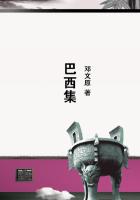"Nevertheless, the inconsequence" (referring to the role assigned by Quesnay to the landlords) "at once becomes clear when we enquire what becomes of the net product , which has been appropriated as rent , in the course of the national-economic circulation. In regard to this the physiocrats and the economic Tableau could offer nothing but confused and arbitrary conceptions, ascending to mysticism"{110}.
All's well that ends well. So Herr Dühring does not know "what becomes of the net product, which has been appropriated as rent, in the course of the national-economic circulation" (represented in the Tableau). To him, the Tableau is the "squaring of the circle" {110}. By his own confession, he does not understand the ABC of physiocracy. After all the beating about the bush, the dropping of buckets into an empty well, the hying hither and thither, the harlequinades, episodes, diversions, repetitions and stupefying mix-ups whose sole purpose was to prepare us for the imposing conclusion, "what the Tableau means in Quesnay himself" {105} -- after all this Herr Dühring's shamefaced confession that he himself does not know .
Once he has shaken off this painful secret, this Horatian "black care" which sat hunched on his back during his ride through the land of the physiocrats, our "serious and subtle thinker" blows another merry blast on his trumpet, as follows:
"The lines which Quesnay draws here and there" (in all there are just five of them!) "in his otherwise fairly simple" (!) " Tableau , and which are meant to represent the circulation of the net product", make one wonder whether "these whimsical combinations of columns" may not be suffused with fantastic mathematics; they are reminiscent of Quesnay's attempts to square the circle {110} -- and so forth.
As Herr Dühring, by his own admission, was unable to understand these lines in spite of their simplicity, he had to follow his favourite procedure of casting suspicion on them. And now he can confidently deliver the coup de grâce to the vexatious Tableau:
"We have considered the net product in this its most dubious aspect" {111}, etc.
So the confession he was constrained to make that he does not understand the first word about the Tableau économique and the "role"played by the net product which figures in it -- that is what Herr Dühring calls "the most dubious aspect of the net product"! What grim humour!
But in order that our readers may not be left in the same cruel ignorance about Quesnay's Tableau as those necessarily are who receive their economic wisdom "first hand" from Herr Dühring, we will explain it briefly as follows:
As is known, the physiocrats divide society into three classes:
(1) The productive, i.e., the class which is actually engaged in agriculture -- tenant-farmers and agricultural labourers; they are called productive, because their labour yields a surplus: rent. (2) The class which appropriates this surplus, including the landowners and their retainers, the prince and in general all officials paid by the state, and finally also the Church in its special character as appropriator of tithes. For the sake of brevity, in what follows we call the first class simply "farmers", and the second class "landlords". (3) The industrial or sterile class; sterile because, in the view of the physiocrats, it adds to the raw materials delivered to it by the productive class only as much value as it consumes in means of subsistence supplied to it by that same class. Quesnay's Tableau was intended to portray how the total annual product of a country (concretely, France) circulates among these three classes and facilitates annual reproduction.
The first premise of the Tableau was that the farming system and with it large-scale agriculture, in the sense in which this term was understood in Quesnay's time, had been generally introduced, Normandy, Picardy, Île-de-France and a few other French provinces serving as prototypes. The farmer therefore appears as the real leader in agriculture, as he represents in the Tableau the whole productive (agricultural)class and pays the landlord a rent in money. An invested capital or inventory of ten milliard livres is assigned to the farmers as a whole; of this sum, one-fifth, or two milliards, is the working capital which has to be replaced every year -- this figure too was estimated on the basis of the best-managed farms in the provinces mentioned above.
Further premises: (1) that for the sake of simplicity constant prices and simple reproduction prevail; (2) that all circulation which takes place solely within one class is excluded, and that only circulation between class and class is taken into account; (3) that all purchases and sales taking place between class and class in the course of the industrial year are combined in a single total sum. Lastly, it must be borne in mind that in Quesnay's time in France, as was more or less the case throughout Europe, the home industry of the peasant families satisfied by far the greater portion of their needs other than food, and is therefore taken for granted here as supplementary to agriculture.
The starting-point of the Tableau is the total harvest, the gross product of the annual yield of the soil, which is consequently placed as the first item -- or the "total reproduction" of the country, in this case France. The magnitude of value of this gross product is estimated on the basis of the average prices of agricultural products among the trading nations. It comes to five milliard livres, a sum which roughly expresses the money value of the gross agricultural production of France based on such statistical estimates as were then possible. This and nothing else is the reason why in his Tableau Quesnay "operates with several milliards" {106}, to be precise, with five milliards, and not with five livres tournois . [99]














